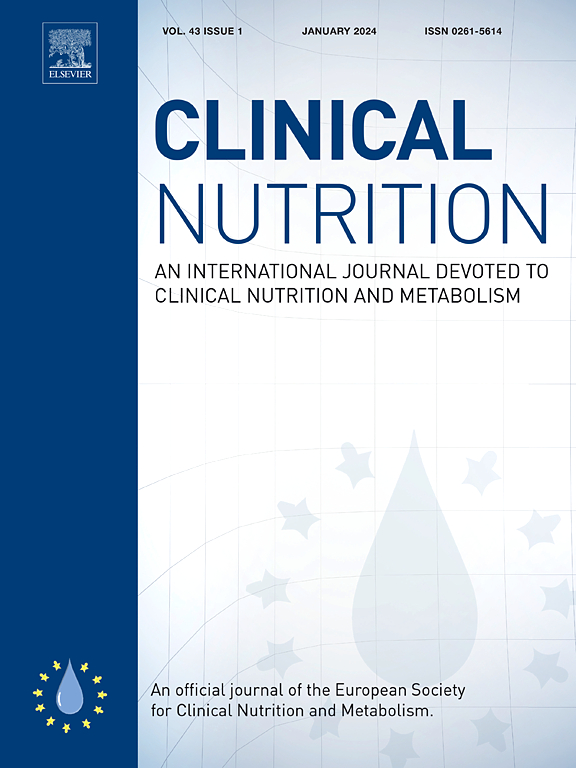Hidden Malnutrition in Obesity and Knee Osteoarthritis: Assessment, Overlap with Sarcopenic Obesity and Health Outcomes
IF 6.6
2区 医学
Q1 NUTRITION & DIETETICS
引用次数: 0
Abstract
Background & Aims
Malnutrition may be a hidden but relevant health condition in individuals with obesity and osteoarthritis. The Global Leadership Initiative on Malnutrition (GLIM) consensus includes muscle mass as one of the key phenotypic criteria, potentially enhancing its ability to detect malnutrition in individuals with obesity. We comprehensively profiled the nutritional status of individuals with obesity and advanced knee osteoarthritis and explored associations with health outcomes.
Methods
Data from the Prevention Of MusclE Loss in Osteoarthritis (POMELO) study was used, which included individuals with knee osteoarthritis and BMI≥35kg/m2. Nutritional status was evaluated using the Global Leadership Initiative on Malnutrition (GLIM) and sarcopenic obesity (SO) criteria. Low muscle mass (dual-energy x-ray absorptiometry), inflammation (C-reactive protein), low muscle strength (handgrip/BMI), objective physical function (chair-stand test, 6-minute walk test), and self-reported measures (quality of life, arthritis symptoms, and self-efficacy) were evaluated. Linear regressions were performed between GLIM-malnutrition and health outcomes, adjusted by age.
Results
Forty-six individuals (73.9% female, age 64.2±6.7 years, BMI 42.4±4.7 kg/m2) were included. Regarding nutritional status, 26.1% were classified with malnutrition (i.e., defined by the combination of low muscle mass and elevated CRP concentration), 26.1% with SO, and 13% shared both conditions. Individuals with malnutrition presented with worse self-reported physical function (WOMAC function: 38.0±6.6 vs. 32.0±12.5, p=0.04) and lower arthritis self-efficacy (‘other symptoms’ component: 5.1±1.9 vs. 6.3±1.7, p=0.04) compared to those without malnutrition. A trend was identified for lower quality of life (visual analog scale 46.8±12.3 vs. 58.3±20.5, p=0.06) in those with malnutrition. Poor lipid control (R2=0.15, ß=0.76, 95% CI 0.08–1.44, p=0.030), body fat (R2=0.14, ß=5.56, 95% CI 1.01–10.11, p=0.018), and poor arthritis self-efficacy (R2=0.09, ß=-1.23, 95% CI -2.39–-0.06, p=0.040) were also associated with malnutrition.
Conclusions
Participants presented with high malnutrition rates (1 out of 4), and half of them also had SO. Malnutrition was associated with abnormal metabolic parameters, lower arthritis self-efficacy, and worse self-reported physical function. An early nutritional assessment and intervention may be imperative for individuals with osteoarthritis and obesity to mitigate health consequences.
求助全文
约1分钟内获得全文
求助全文
来源期刊

Clinical nutrition
医学-营养学
CiteScore
14.10
自引率
6.30%
发文量
356
审稿时长
28 days
期刊介绍:
Clinical Nutrition, the official journal of ESPEN, The European Society for Clinical Nutrition and Metabolism, is an international journal providing essential scientific information on nutritional and metabolic care and the relationship between nutrition and disease both in the setting of basic science and clinical practice. Published bi-monthly, each issue combines original articles and reviews providing an invaluable reference for any specialist concerned with these fields.
 求助内容:
求助内容: 应助结果提醒方式:
应助结果提醒方式:


